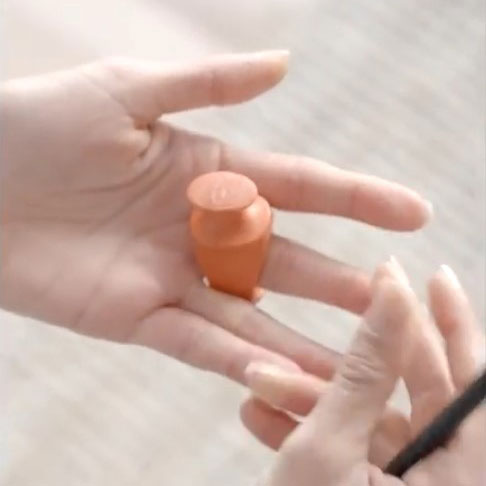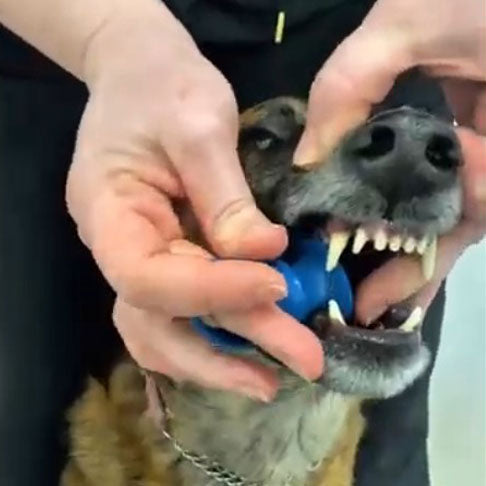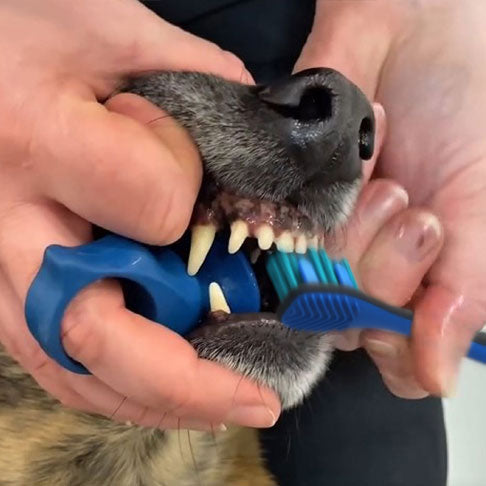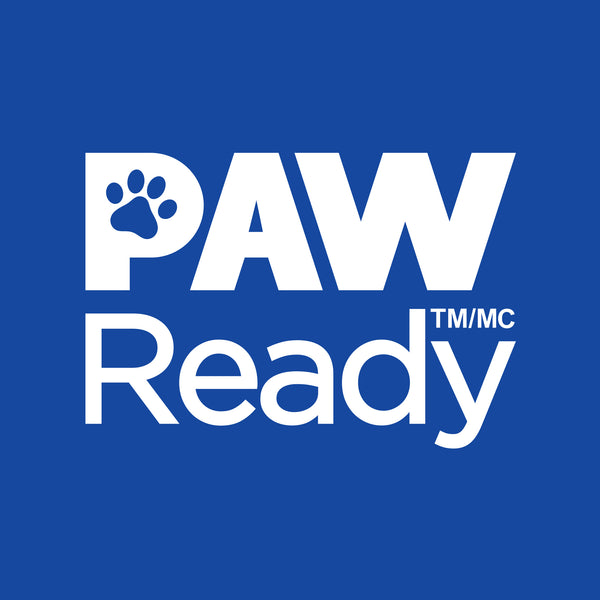BiteBlock Instructions Video

BiteBlock Instructions
1. Small & Medium: Insert the BiteBlock onto your middle finger, having the grooved edge facing upwards, with the BiteBlock’s bite surface perpendicular to your palm. Position your index finger between the grooves to secure the BiteBlock in place.
Large: Insert the BiteBlock onto your middle or index finger with the BiteBlock’s bite surface perpendicular to your palm.

2. Insert the BiteBlock into the side of your pet’s mouth, allowing your pet to bite down on the BiteBlock. With the hand holding the BiteBlock, place your thumb on top of the snout, using your bottom two fingers to steady the jaw under the snout. This will allow for one handed control, freeing your other hand to brush your pet’s teeth. Be gentle with your grip, as a pet’s snout can be sensitive.

3.Using a toothbrush with your other hand, brush your pet’s teeth on the opposite side of the BiteBlock, making sure to brush the inside and outside.
4.Upon completion, remove the BiteBlock from your pet’s mouth, and repeat the previous steps on the other side of your pet’s mouth, using the BiteBlock on your opposite hand.
Important Notes/Things to Consider:
Our Paw Ready team highly recommends starting to use the BiteBlock on your pet at an early age, as regular brushing of your pet’s teeth will get them accustomed to a regular routine of oral care. Please note that your pet may need to be trained to accept the BiteBlock in their mouth. Progressively building up brushing sessions over time, until your pet is comfortable with the BiteBlock. Additional time may be required if BiteBlock is being introduced to older pets.
